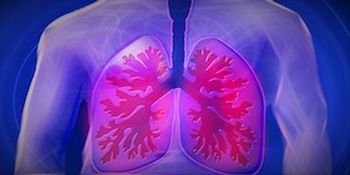
Pharmacy benefit managers would be required to obtain a license from the state to do business in Arkansas, under proposed legislation announced Wednesday.

Pharmacy benefit managers would be required to obtain a license from the state to do business in Arkansas, under proposed legislation announced Wednesday.

Winn-Dixie and Tops Friendly Pharmacies are facing bankruptcy.

Under the PEPFAR program, the antiretroviral (ARV) combination will be available in developing countries as a treatment for patients with HIV/AIDS.

The CDC reports that the epidemiologic evidence collected indicates that products reported to be kratom or contain kratom are a likely cause of the outbreak.

Restrictive eating, emotional eating, and binge eating are mental traps that keep us from reaching our goal.

A review of food allergies, ways pharmacists can provide education, and some great resources for information.

Does your pharmacy institution offer students the opportunity to earn a concentration alongside their PharmD degree?

A Pharmacy Benefit Manager (PBM) is a third party administrator contracted by health plans, employers, unions and government entities to manage prescription drug programs. A PBM acts as a fiscal intermediary between insurers/payors and pharmacies.

Many patients have food allergies, especially to nuts. These nut-free choices can help them enjoy safe alternatives without compromising on taste!

Vaccines prevent patients from acquiring serious and potentially fatal diseases. It is our job as pharmacists to utilize every opportunity we have to immunize patients.

Humans operate on a diurnal pattern and need sleep for brain development, physical and mental health, and cognitive function maintenance

Immunotherapy-related side effects can occur at any time and can affect any organ.

The FDA recently approved durvalumab (Imfinzi) for the treatment of patients with stage 3 non-small cell lung cancer (NSCLC) whose tumors are unresectable and whose disease has not progressed following treatment with chemoradiation.

A follow up to part one, we learn more about what comes after the third professional year of pharmacy school and beyond

QVAR RediHaler is now commercially available to patients by prescription in 40 mcg and 80 mcg strengths.

This weekly video program provides our readers with an in-depth review of the latest news, product approvals, FDA rulings, and more. Our Week in Review is a can't miss for the busy pharmacy professional.

Pharmacists can play an important role in educating families about poison prevention.

Tissue Plasminogen Activator (tPA) is administered in patients with Acute Ischemic Stroke. Becuase tPA administration is time sensitive, caution is required.

The Infectious Diseases Society of America (IDSA) and the Society for Healthcare Epidemiology of America (SHEA) have released updated guidelines for Clostridium difficile infections.

A new study published in the Annals of Internal Medicine this week suggests that opioids may pose a different, unintended untoward consequence in patients: an increased risk of pneumococcal infection.



As the job market for pharmacists becomes more competitive, many pharmacists are turning to credentialing as a way to distinguish themselves professionally.

Migraines may be an important risk factor for several cardiovascular diseases, apart from stroke and heart attacks.

February is American Heart Month.

FDA officials have approved tezacaftor/ivacaftor and ivacaftor (Symdeko, Vertex Pharmaceuticals) for the treatment of cystic fibrosis (CF) in individuals aged 12 years and older.

Officials with the FDA have approved Novartis' glatiramer acetate injection (Glatopa) 40-mg/mL for the treatment of multiple sclerosis (MS).

Adults over the age of 65 are increasingly more active on Facebook, especially when it comes to health information.

This is the fourth part of a series on how pharmacy professionals have been depicted on TV, both in a positive and negative manner.

Dr. Timothy Burke provides insight into this nontraditional field.